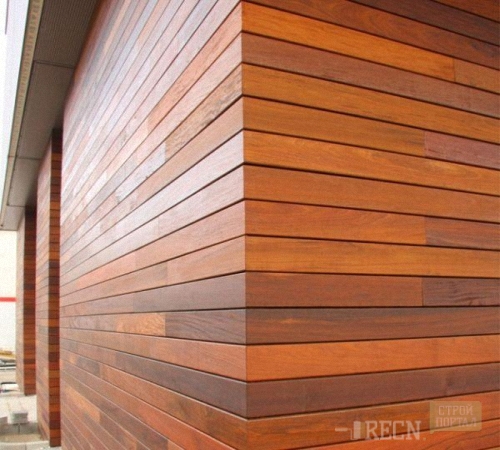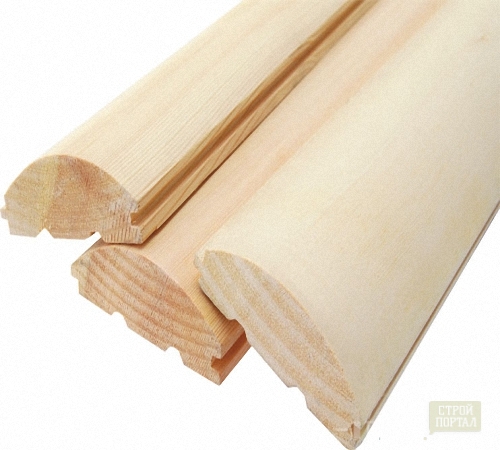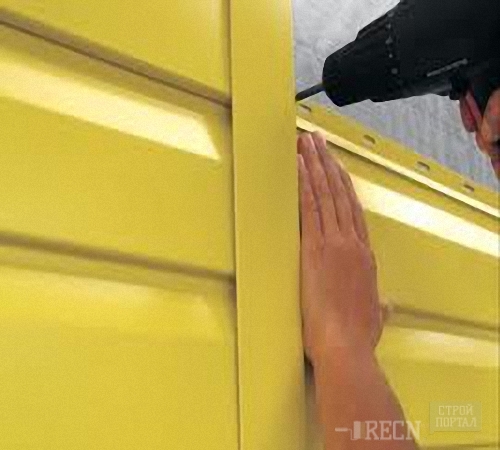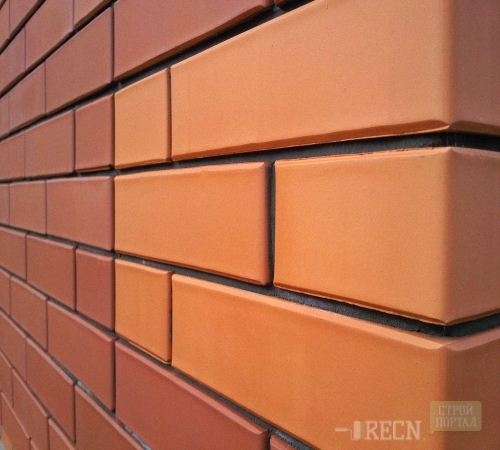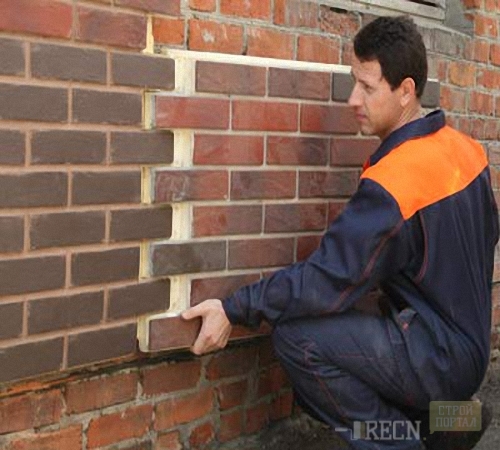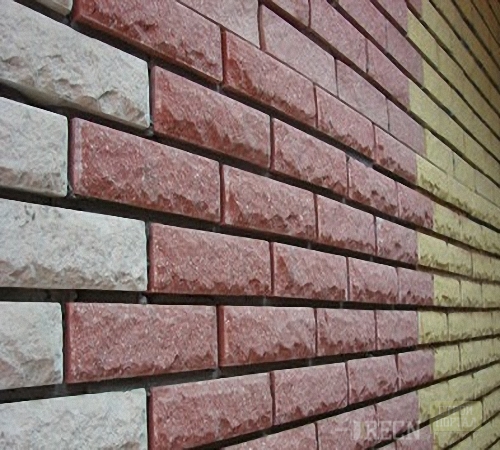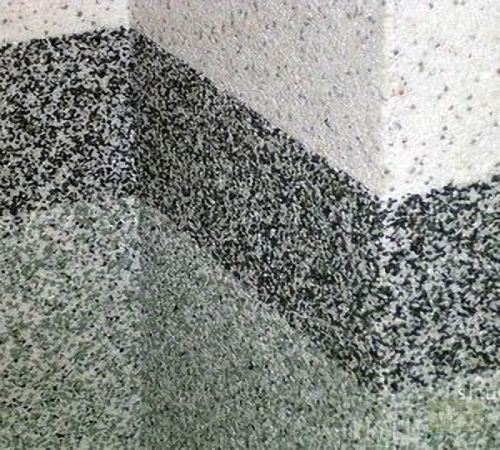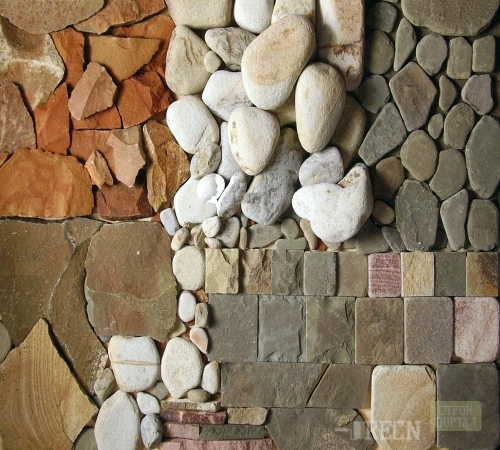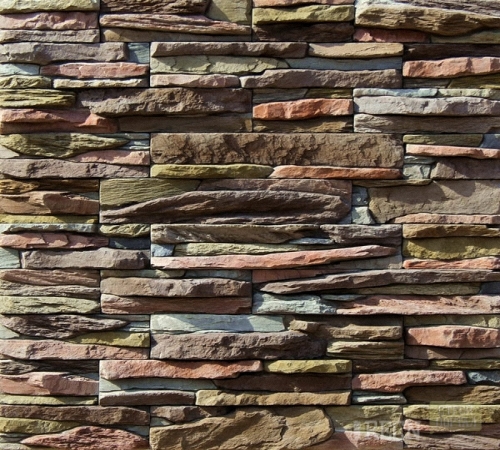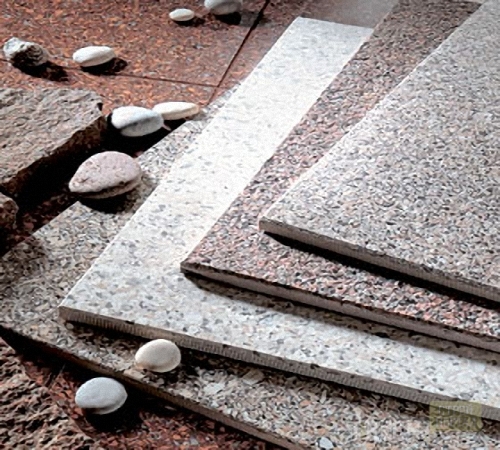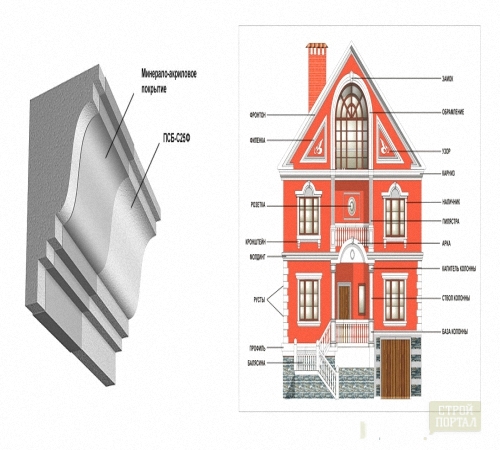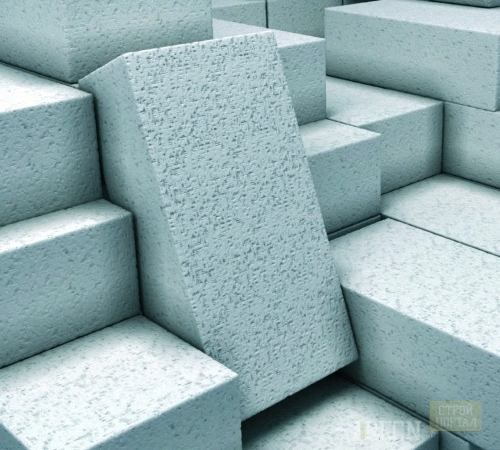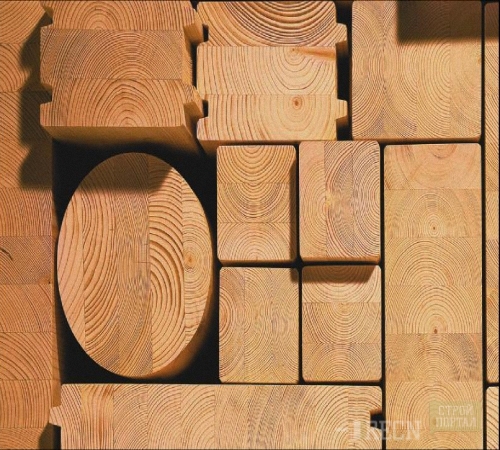
Materials for facing facades of houses Construction,Building materials
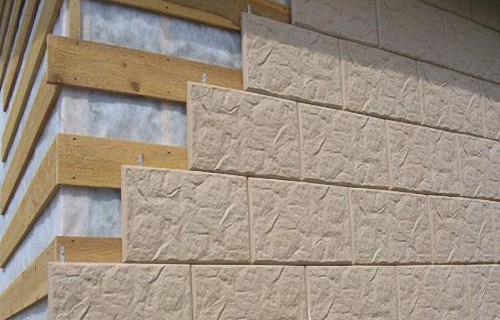
Finishing work on the repair and construction of the house are an external improvement of the structure. Facing the facade of the house with their own hands is the opportunity to choose exactly the materials that you like, perform the work to really qualitatively and save on payment of services, often not professional, building brigades.
Content
Choosing materials
When it comes to facing the facade of the house, the first thing is to consider options that apply to construction. The market contains the following categories of goods:
- vinyl siding
- vinyl and wooden block House,
- steel siding
- facing brick
- clinker thermopanels,
- decorative tile
- decorative plaster,
- a natural stone,
- fake diamond,
- porcelain stoneware
- architecture elements
- the brick is passioned,
- aerated concrete
- wooden materials.
To understand which of these options is suitable for you, see facing facades of houses photos. But, the visual component is not all. Each of the materials requires the fulfillment of certain preparatory work and has both its advantages and disadvantages.
Vinyl Siding
Facing the facade of the house and the price of materials is represented by a wide range of inexpensive, to the ecstatic elite options. The most democratic is considered to finish with vinyl panels. This material is resistant to negative environmental factors, retains its physical properties at temperatures from -50 to +50 degrees Celsius. In addition, the panels do not fade in the sun and retain the drawing within 10-15 years.
Externally, vinyl siding has the most different solutions. Panels are performed under all kinds of wood varieties, stone or have a specific drawing. The last option is usually manufactured to order.
Installation technology is quite simple:
- make a frame from the profile for plasterboard,
- insulate the framework of minvata or foam
- install plastic panels.
From the immediate advantages of the material - wear resistance, availability, simplicity of installation. Cons conclude that plastic is subject to mechanical damage. In addition, over time the fasteners are loosened, which leads to ingress under the moisture panel. This, in turn, leads to the appearance of mold inside the house. This option is the most convenient to apply for the facade of the facades of country houses and cottages.
Vinyl and Wooden Block House
Block House is an imitation of a wooden cut. This uses either plastic panels or wooden blanks. Plastic has all the same characteristics that are listed in vinyl siding. In essence, the difference between these two deco, only in appearance.
The tree is more expensive and reliable material. It should be remembered that plastic has a claimed operational period of 50 years. For wood, 10-15 years old are discharged. But, if in the case of plastic, it is a bordered term, then the tree can be re-processing and extending it to the service infinitely.
When installing a wooden housekeeper, the main thing is to handle the material with morilies and antiseptics to protect the wood from parasites. Plastic must be well insulated, the frame cannot be left in the frame, as it will lead to noise in the walls. The sound will arise, both in manifestations of weather and from normal walking.
The advantages of plastic is that it is not whimsical and does not require much care, and at the end of the service life is easily replaced by other panels. The shelf life is not limited, so you can stock up with additional panels. Disadvantages are the same as the vinyl siding.
Tree is more reliable than panels. It can serve not one hundred years, but requires care and care, this is the only minus of this option. As the advantages note:
- ecology,
- heat protection
- natural ventilation
- waterproofing,
- external appeal.
Steel Siding
Facing the facade of the private house is often performed using a profiled metal. This technology is similar to vinyl siding, the exception that the metal is much stronger and more durable.
Externally steel siding imitates:
- lining
- wooden logs,
- sex board
- art Deco.
The color palette is represented by all sorts of options from imitation of natural materials, to conventional paint. Separately, it is worth noting Art Deco. Such profiled sheets are made under the order and may have absolutely any shape, this does not affect the fastening technology:
- install every 30 cm bearing tolls,
- collect the frame from the profile for drywall,
- warm, isolate frame,
- attach profile to carrier boards.
The indisputable plus of this material is its durability. Even if with the time the paint is extended and unwinds, it can be easily replaced without dismantling all the designs. Sheets are resistant to any kind of damage and serve as perfect waterproofing, as they do not let moisture. The only moment that requires attention is considered weight. Professor is quite heavy, so it is not recommended to use it for finishing two or more floors. First, the foundation may not be designed for such heaviness, secondly, the additional load on the walls leads to their premature destruction.
Facing brick
Among the materials for facing facades of houses, facing brick enjoy the greatest success. It gives the structure of a complete character and makes similar to the mansions of the aristocratic nobility.
Brick is made of clay by thermal processing in the furnaces. Due to what is most durable. The service life is not limited. Laying is performed using a cement mortar and does not require any knowledge. Speaks for itself and the price of the material. This is one of the most expensive facade improvement options.
In practice, using such bricks, individual architectural elements are distinguished or separate compositions create separate compositions. This is not only savings, but also the ability to make your home original and unique.
Because of the small thickness, the stone is quite easy. For the same reason, to maintain the temperature regime in the house there will be insulation of foam. Warming will not be superfluous in any design, so it is written in disadvantages - a disputed moment.
Clinker thermopanels
New in the building materials market, which is in great demand. Represents a system consisting of:
- foam
- plastic
- clinker base.
Polyfoam serves as insulation, plastic with a link. In some systems, it is replaced with extruded foam. Clinker base is a high-quality imitation of real clinker tiles. In fact, it is much thinner and has lower physical indicators, although it does not differ in any way.
This option tries to combine style and affordable cost. But, you should not count on what it happened to fully fully. The seams on the joints of the thermopadals are diverged, condensate is formed under the tile, which penetrates the wall of the house and leads to the appearance of mold. In addition, manufacturers are so actively promoting their goods and produce so many new products that in case of damage to the surface of the thermopanel several years after installation, it will be difficult to find a similar option on the market.
Although, given the inexpensive cost, thermopanels are used to facade the facade of country houses.
Decorative tile
Often, tile is used to simulate decorative stone. It is cheaper and more practical. Tile make under a cored, lamb or clinker. On the operational characteristics, the tile is not inferior to the stone. Externally, it does not differ in any way.
Tile has the following disadvantages:
- fall off with a bad mount,
- known in mechanical damage,
- burst from a significant temperature difference,
- not adapted to work in harsh frost.
Decorative tile is used to improve the facades of houses located in a temperate climate. Heat, also destructively affects the tile. Peel and sharpened seams, as a result, the tile can fall. Additional materials such as grout should be included in the cost of work. On large areas, the cost of tiles together with the grout may be greater than stone. This fact should be considered.
Decorative plaster
Modern technologies offer a different decorative plaster consumer. This is a finishing material that is applied either on the classic plaster or right over the insulation. Technologically, the first option.
Such plasters are durable and not fade into the sun. When complying with the stages of the application of plaster, it does not crack and does not reflux. Initially, this type of deco was sold only in dry mixes that it was necessary to breed themselves. Now there are already divorced and ready-to-use mixtures. The first option is cheaper, the second is better.
As such, there are no minuses of this option. Plaster:
- retains physical properties at any temperatures
- sufficiently resistant to mechanical damage,
- allows the surface of the walls to "breathe",
- does not collect condensate.
The appearance is limited only by fantasy. The most common mixtures mimic marble crumb, but there are also one-photon options. Dry mixes of the same brand are mixed and allowed to create original solutions. For the price, such a finish is only a little inferior to natural stones and is one of the most expensive.
A natural stone
Natural stone is used to decorating facades of private houses. Some of its varieties are the most expensive finishing materials on the market. This is due to the fact that the stone does not need to care and has an unlimited service life. Allocate the following types:
- marble,
- granite,
- tuff
- slate
- sandstone,
- limestone,
- quartzite.
Other rocks are used. Limestone hit the list not by chance. This stone has several varieties, some are used for the construction of bearing walls, some for their decoration.
Miscellaneous stones differs only appearance. This is the only finishing material that is devoid of flaws. It is worth noting that in the regions with a wet climate, some rocks can face moss. It does not destroy the structure of the stone and complements the exterior, but if desired, it is easily eliminated.
Fake diamond
Artificial stone is manufactured for imitation of natural stone rocks. It is usually produced from the gypsum, so the use of indoors is not recommended, but for external work it serves as an excellent analogue of natural material.
Gypsum stone is very crumb - it is the main drawback. It does not fully withstand mechanical damage. In addition, it is necessary to open with varnish to increase its life. Gypsum is afraid of any moisture, therefore the slightest damage to the protective cover of the decorative stone leads to its destruction. In addition, plaster clogs air outflow. It is not desirable to apply it to decorate the whole wall of the house.
On the other hand, thanks to its spatial appearance and simplicity in the installation, artificial stone is used to create architectural solutions:
- decorate the base
- spawn the corners of the house,
- frame door and window openings,
- used to create songs.
The most spectacular use option along with decorative plaster. In case of damage, artificial stone is easy to glue or replaced with a new one.
Ceramographic
It is a high-tech material that has all the advantages of natural stone, but it is much cheaper. The only drawback is an unattractive appearance.
It is made using clay pressing technology with marble crumb. The finished plates burn in the furnaces at a temperature of 1200-1,400 degrees. Due to this, even without the presence of support, the material is difficult to split. Mounted on the wall, it reliably protects against mechanical damage.
Usually, porcelain stonewares are used to decorate administrative and economic buildings, office space or corporate buildings. In private construction, it is rarely applied.
Nevertheless, this material will suit the owners of houses located in the regions with a continental climate, for which the highest and above low temperatures are characteristic of the excess. Porcelain stoneware absorbs and dispels sunlight, which allows you to control the temperature regime. In winter, the material acts as a hodge barrier.
Flexible ceramics
Another new building materials market. Flexible ceramics consists of 80% from clay, but it has elasticity. The thickness of this coating is 4 mm. The installation process is similar to the blending of the wallpaper. In this case, flexible ceramics retains all properties of ordinary ceramic tiles. The most important advantage is shockproof.
Another indisputable plus is frost resistance. The material carries temperatures to -50 degrees and does not crack.
The disadvantages of the material practically does not possess. Difficulties may occur only with cleaning. Ceramics is covered with a special protective layer, which is spoiled by alkaline detergents.
Elements of architecture
In addition to finishing the wall surface, decorative elements are mounted on window and doorways. They serve for:
- aesthetic purposes
- protection of seams from the penetration of moisture and parasites.
Such elements may be:
- ceramic
- wooden
- plastic
- metal,
- gypsum.
We are talking about the elements of the modeling, or special angular structures, which are spectacularly isolated windows and doors, and also give the finished view of the inner and outer corners of the house. The selection of this element depends on the finishing material. Without restrictions, only plaster uses, as the modeling is installed on any structural solutions.
Brick waspped and aerated concrete
For country buildings, garages and household objects, the appearance of which is not important, the invoked stone or aerated concrete. Both of these material do not need to be processed and in themselves are insulators and seals.
Both materials are almost the same, but nevertheless have a number of significant differences. The picked brick is made of clay. Due to this, the material has no restrictions on the service life. In physical properties, it duplicates facing brick. It is worth noting that the impact resistance of the picked brick below. To solve this pore problem, they are filled with cement mortar.
Aerated concrete is a mixture of slag with cement. It is not recommended to live in such a house because of environmental insecurity. The material is reliable and durable, with an average service life of 80 years. Most often applied to the construction of garages. In the floor of the brick is used to insulate the facades. Serves as the basis for further decoration.
Wooden materials
The success of frame construction brought the production of natural wood to the leading positions of finishing materials. Advantages:
- deadline not limited
- low cost,
- the possibility of fitting,
- the ability to create any designs
- easy installation.
The facade of the facade of the frame house is done directly at the time of construction and does not require additional costs. For stone buildings, the use of wood is associated with the creation of frame-type supporting structures on which the deco elements are mounted.
The tree is one of the few living materials. This implies:
- ecology,
- good ventilation
- hydro, paro insulation,
- thermal insulation
- lack of temperature regime.
But there are also their drawbacks. So, behind the wooden facade it is necessary to constantly care. Service is carried out on average every three years and includes:
- okuring
- processing by verses
- processing with antiseptics.
Despite all the obvious advantages, for owners of stone houses, experts recommend applying more traditional bases. It is worth noting that the tree weighs a lot and creates a tangible load on the carrier wall, which leads to its destruction.




